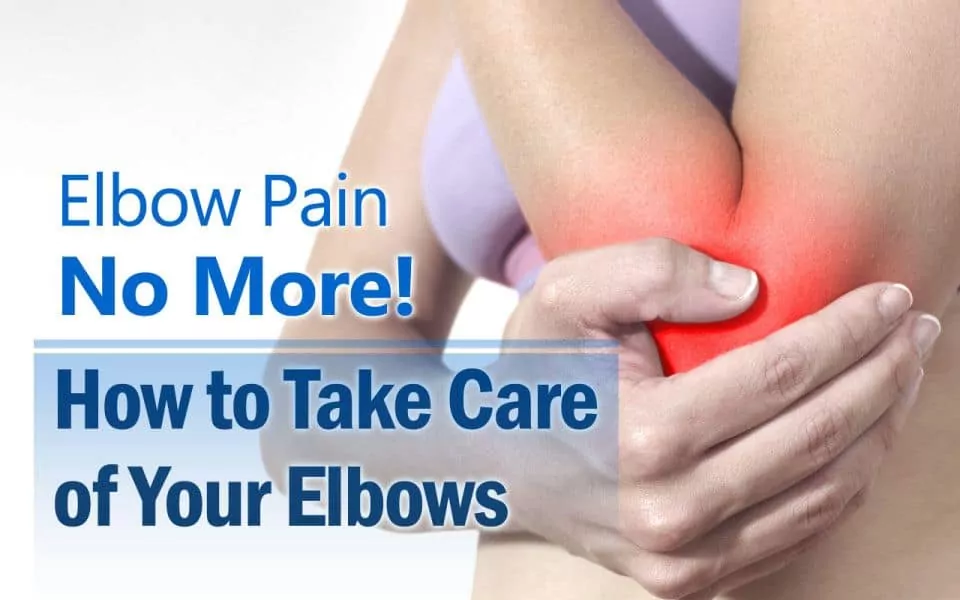
These days we’ve grown to think of ourselves as so fit and healthy that we can do pretty much anything. Now, for most of us, that’s probably true. Some of us might find that they can barely make it through the day without experiencing a certain degree of pain in their joints, with a sincere desire to eliminate elbow pain, for instance. And to be honest, joint pain is not something to shrug off – and indeed many of us literally can’t shrug it off. Elbow pain, for instance, can be quite taxing. If you need to ask how this could possibly be the case, consider how much you need your arms for on a daily basis.
Lifting things – not always heavy boxes, sure, but things nonetheless – and opening doors are among the most common acts. How about driving? Holding guardrails on stairs and walkways and the like? Or even twisting the cap off a bottle of mineral water? All of these tasks require a certain degree of movement from the arm, particularly the joint that facilitates movement and helps sustain carried weight. It’s no surprise that elbow pain is known to be one of the most common problems treated by occupational and hand therapists. Fortunately, treatment can be boiled down to a few simple steps.
1. Identify the source of the pain.
If you detect tenderness on the protrusion on the outside (away from your body) of your elbow joint, this is pain in the lateral epicondyle. This is usually indicative of a condition called tennis elbow. One of the most common joint ailments, tennis elbow is named for the repetitive use of the joint in playing tennis – the repetitive use is what causes the injury, as repetitive stress and strain damages the tendons in the joint. (As such, even people who have never set foot on a tennis court can suffer this type of overuse injury.) On the other hand, pain on the inside of the elbow joint – the medial epicondyle – is usually called golfer’s elbow, but the basic cause of the injury is the same.
2. Identify the cause of the pain.
Overuse injuries, as mentioned above, typically result not from the sport the injury is named after but a long time of repeated stress affecting the elbow. Some people might be able to quickly name instances where they undertook a lengthy or repetitive physical activity like working on an assembly line, carrying heavy boxes, lifting too much at the gym, and so on. Others, however, might find it more difficult to isolate the origin of their injury. It’s worth noting, though, that sometimes it’s the gripping the steering wheel on a long drive, and sometimes it can be the way you lean on your desk at work.
3. Begin home treatment.
Depending on the severity of the injury, the pain might actually go away on its own under the right circumstances. Typically the immediate treatment that contributes to this – and that should be continued even if the pain persists — involves rest, ice, compression and elevation. Rest involves reducing or eliminating movement for some time, which only makes sense because it helps recovery along if the joint isn’t continuously placed under stress. Ice will help reduce both the pain and the inflammation, as the lower temperature will help numb the nerves and soothe the inflamed layers. Compression and elevation will help aid the circulation in the affected area, which will also help reduce the inflammation. These home treatments are standard for any joint pain, and they’ve been proven over time to be effective.
4. Consider alternative steps.
While rest, ice, compression and elevation are always part of any joint pain relief regimen, others might find that different steps help them more. Chronic pain going on for more than a week, for example, sometimes gets soothed by heat – specifically a moist hot pack applied to the elbow and forearm. Heat is known to assist in ensuring good circulation, which brings blood and nutrients to the injured area to aid in healing. Stretching is another good step to take, as long as you can do so in a totally pain-free manner. Stretching can loosen up the muscles of the forearms. Make sure that you can do these completely without pain – at most, a slight pull or stretch from the muscles.
5. Consider braces and sleeves.
Severe pain will probably call for external assistance. A counterforce brace, for example, is a strap-like device put on the forearm to dissipate the force from the muscles before it reaches the elbow. Place the strap about two to three finger widths from the location of the pain, and fit it snugly but not so tight it interferes with circulation. On the other hand, a wrist immobilization brace will usually be needed for severe pain or elbow pain accompanied by forearm pain. Wrist immobilization will help give the elbow muscles the rest they need in order to heal properly. Use CopperJoint Elbow Sleeves to eliminate elbow pain for best results.
6. Get professional treatment.
Don’t assume that it’s for the best to simply self-treat, as this doesn’t always work out the way one hopes. Getting a professional to look at the ailment is always the best move, and any home treatment is just a bridge between feeling the pain of the injury and getting that professional opinion and eventual prescription. Look at it this way: if you’ve been doing everything right, the worst thing is that the doctor will affirm that. If you haven’t been doing it right, or if it wasn’t sufficient, or if you were unwittingly ignoring some aspects, then it will have been a very good idea to give a professional the chance to point that out.
For more information on our Copper Infused Elbow Sleeve, Click Here!